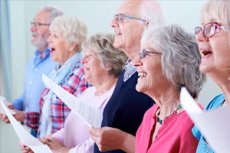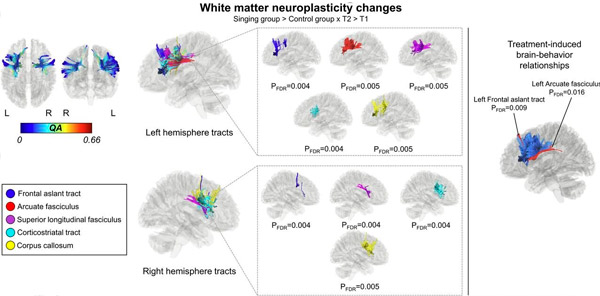New publications
Singing restores speech in aphasia after stroke
Last reviewed: 02.07.2025

All iLive content is medically reviewed or fact checked to ensure as much factual accuracy as possible.
We have strict sourcing guidelines and only link to reputable media sites, academic research institutions and, whenever possible, medically peer reviewed studies. Note that the numbers in parentheses ([1], [2], etc.) are clickable links to these studies.
If you feel that any of our content is inaccurate, out-of-date, or otherwise questionable, please select it and press Ctrl + Enter.

Cerebrovascular disease, or stroke, is the most common cause of aphasia, a language disorder caused by brain damage. People with aphasia have difficulty understanding or producing speech or written language. It is estimated that about 40% of people who have had a stroke have aphasia. Half of these people still have symptoms of aphasia even a year after the initial attack.
Previously, researchers from the University of Helsinki found that singing helps restore speech in stroke patients . Now they have found out the reason for the rehabilitative effect of singing. The recently completed study was published in the journal eNeuro.
According to the findings, singing restores the structural language network of the brain. The language network processes language and speech in our brain. In patients with aphasia, this network is damaged.
"For the first time, our results demonstrate that the rehabilitation of patients with aphasia through singing is based on neuroplasticity, that is, the plasticity of the brain," says University of Helsinki researcher Aleki Sihvonen.
Singing improves language network pathways
The language network includes cortical areas of the brain involved in processing language and speech, as well as white matter, which transmits information between different areas of the cortex.
According to the study, singing increases gray matter volume in the language regions of the left frontal lobe and improves tract connectivity, especially in the language network of the left hemisphere, but also in the right hemisphere.
"These positive changes were associated with improved speech production in patients," Sihvonen says.

Treatment-induced changes in white matter neuroplasticity. Connectometry results show significant tract segments with longitudinal QA increases significantly associated with the singing group compared to the control group between T1 and T2 (ΔT2–T1; left) and a correlation of longitudinal QA changes with naming improvement (right). Source: eneuro (2024). DOI: 10.1523/ENEURO.0408-23.2024
A total of 54 patients with aphasia took part in the study, of whom 28 underwent MRI scans at the beginning and end of the study. The researchers examined the rehabilitation effects of singing through choral singing, music therapy and home singing exercises.
Singing as a cost-effective treatment Aphasia has a wide impact on the functional abilities and quality of life of those affected and easily leads to social isolation.
Sihvonen believes that singing can be seen as a cost-effective addition to traditional forms of rehabilitation or as rehabilitation for mild speech disorders in cases where access to other forms of rehabilitation is limited.
"Patients can also sing with their family members, and singing can be organised in health care settings as a group, cost-effective rehabilitation," says Sihvonen.
